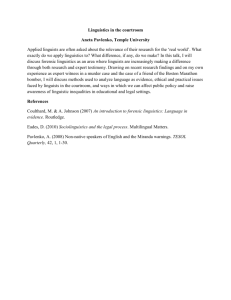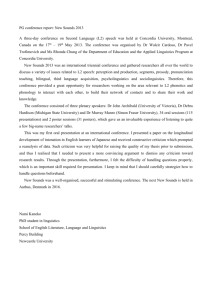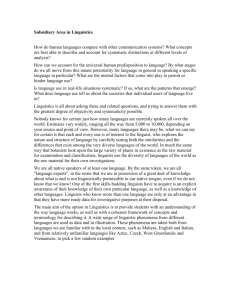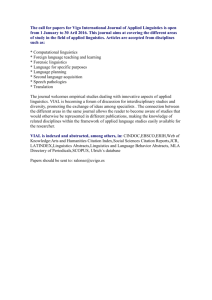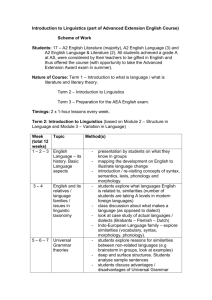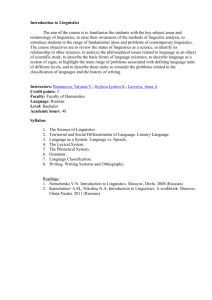Linguistics
advertisement
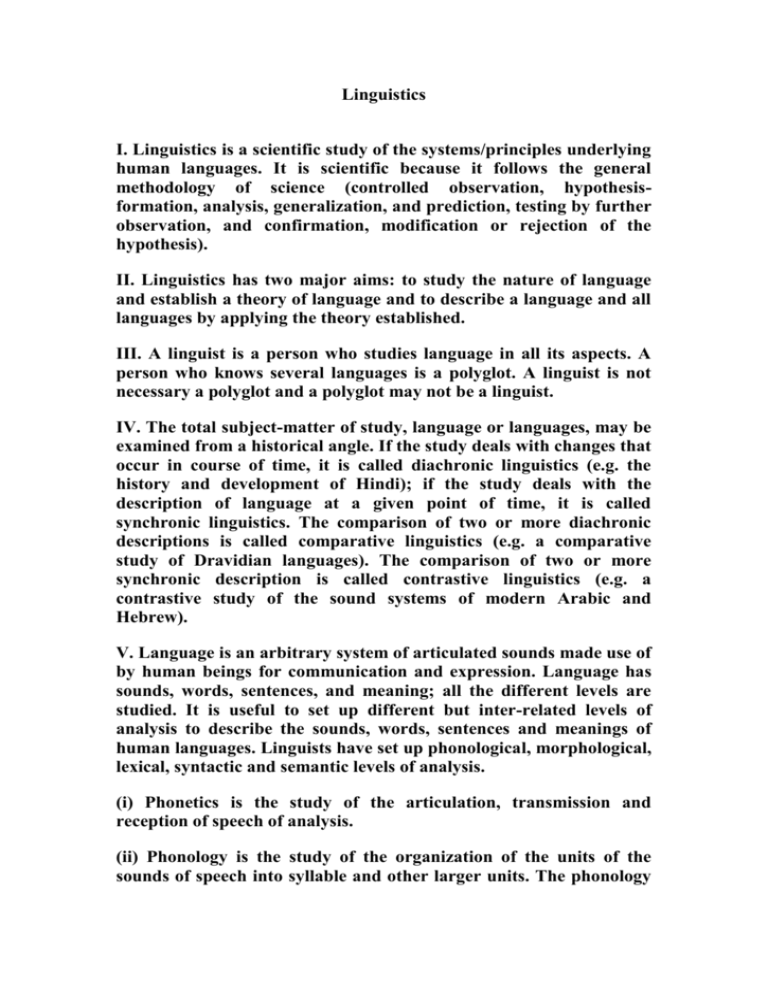
Linguistics I. Linguistics is a scientific study of the systems/principles underlying human languages. It is scientific because it follows the general methodology of science (controlled observation, hypothesisformation, analysis, generalization, and prediction, testing by further observation, and confirmation, modification or rejection of the hypothesis). II. Linguistics has two major aims: to study the nature of language and establish a theory of language and to describe a language and all languages by applying the theory established. III. A linguist is a person who studies language in all its aspects. A person who knows several languages is a polyglot. A linguist is not necessary a polyglot and a polyglot may not be a linguist. IV. The total subject-matter of study, language or languages, may be examined from a historical angle. If the study deals with changes that occur in course of time, it is called diachronic linguistics (e.g. the history and development of Hindi); if the study deals with the description of language at a given point of time, it is called synchronic linguistics. The comparison of two or more diachronic descriptions is called comparative linguistics (e.g. a comparative study of Dravidian languages). The comparison of two or more synchronic description is called contrastive linguistics (e.g. a contrastive study of the sound systems of modern Arabic and Hebrew). V. Language is an arbitrary system of articulated sounds made use of by human beings for communication and expression. Language has sounds, words, sentences, and meaning; all the different levels are studied. It is useful to set up different but inter-related levels of analysis to describe the sounds, words, sentences and meanings of human languages. Linguists have set up phonological, morphological, lexical, syntactic and semantic levels of analysis. (i) Phonetics is the study of the articulation, transmission and reception of speech of analysis. (ii) Phonology is the study of the organization of the units of the sounds of speech into syllable and other larger units. The phonology of a language is a description of the systems and patterns of sounds that occur in that language. (iii) Morphology is the study of words. (iv) Syntax deals with the combination of words into phrases, clauses and sentences. (v) Semantics is concerned with the study of meaning in all its aspects. The term grammar is sometimes used to refer to morphology and syntax; some linguists use it to refer the entire language. (vi) Graphology is the study of all the conventions used in representing speech in writing. (vii) Lexicology is the study of lexical items and their collocational relations. Some linguists make a distinction between microlinguistcs and macrolinguistics. The former refers to a narrower and latter to a much broader view of the scope of linguistics. According to the microlinguistics view, languages should be analyzed for their own sake without any reference to their social function, to the manner in which they are acquired by human beings, and to the literary or communicative function of language. Macrolinguistics embraces all these aspects of language. The application of the concepts and methods used in linguistics to other areas like language teaching, translation or testing is called applied linguistics. The study of language for its own sake is called theoretical linguistics. VI. Other related disciplines are psycholinguistics (the study of how human beings acquire language and how we use language to speak and understand), sociolinguistics (the study of language in relation to society), etc. VII. The chart on the following page shows the total area of linguistics, its applications, and related disciplines.


